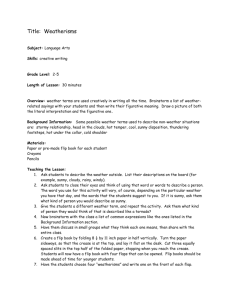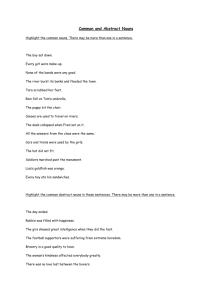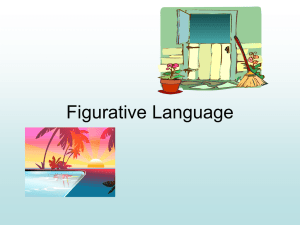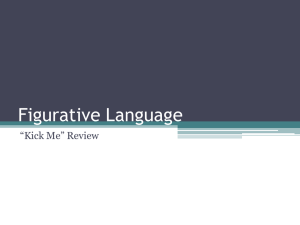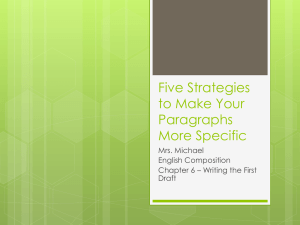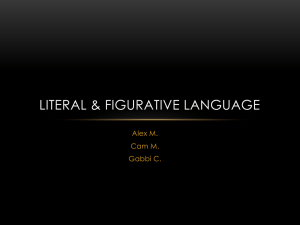ELA Weekly Plans
advertisement
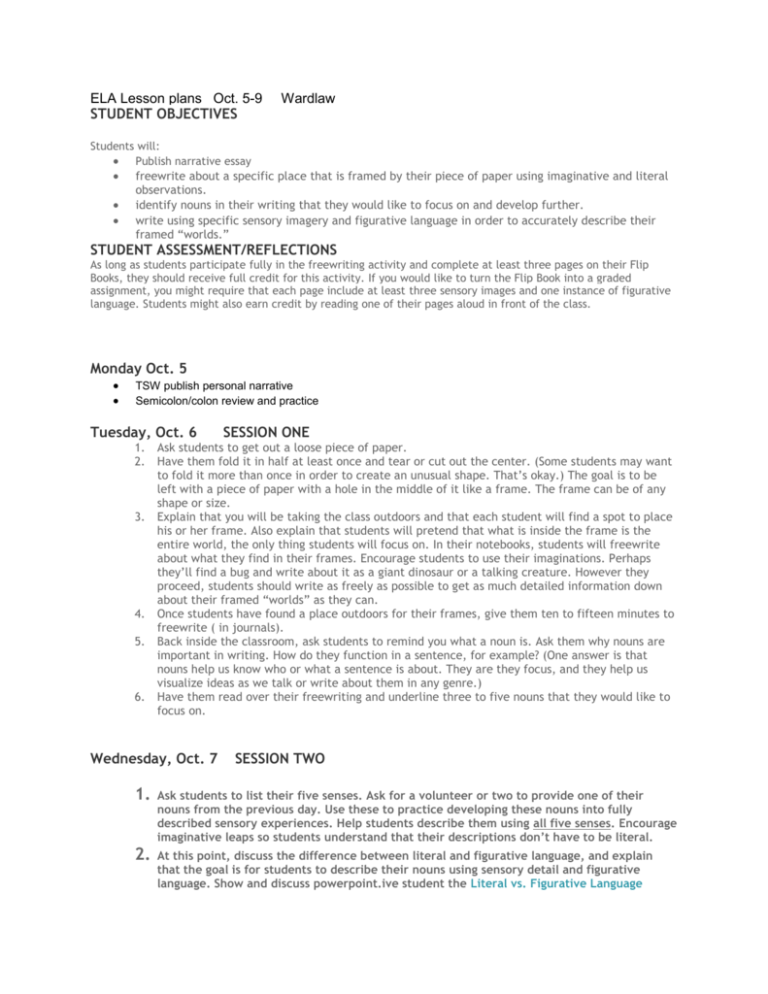
ELA Lesson plans Oct. 5-9 STUDENT OBJECTIVES Wardlaw Students will: Publish narrative essay freewrite about a specific place that is framed by their piece of paper using imaginative and literal observations. identify nouns in their writing that they would like to focus on and develop further. write using specific sensory imagery and figurative language in order to accurately describe their framed “worlds.” STUDENT ASSESSMENT/REFLECTIONS As long as students participate fully in the freewriting activity and complete at least three pages on their Flip Books, they should receive full credit for this activity. If you would like to turn the Flip Book into a graded assignment, you might require that each page include at least three sensory images and one instance of figurative language. Students might also earn credit by reading one of their pages aloud in front of the class. Monday Oct. 5 TSW publish personal narrative Semicolon/colon review and practice Tuesday, Oct. 6 1. 2. 3. 4. 5. 6. SESSION ONE Ask students to get out a loose piece of paper. Have them fold it in half at least once and tear or cut out the center. (Some students may want to fold it more than once in order to create an unusual shape. That’s okay.) The goal is to be left with a piece of paper with a hole in the middle of it like a frame. The frame can be of any shape or size. Explain that you will be taking the class outdoors and that each student will find a spot to place his or her frame. Also explain that students will pretend that what is inside the frame is the entire world, the only thing students will focus on. In their notebooks, students will freewrite about what they find in their frames. Encourage students to use their imaginations. Perhaps they’ll find a bug and write about it as a giant dinosaur or a talking creature. However they proceed, students should write as freely as possible to get as much detailed information down about their framed “worlds” as they can. Once students have found a place outdoors for their frames, give them ten to fifteen minutes to freewrite ( in journals). Back inside the classroom, ask students to remind you what a noun is. Ask them why nouns are important in writing. How do they function in a sentence, for example? (One answer is that nouns help us know who or what a sentence is about. They are they focus, and they help us visualize ideas as we talk or write about them in any genre.) Have them read over their freewriting and underline three to five nouns that they would like to focus on. Wednesday, Oct. 7 SESSION TWO 1. Ask students to list their five senses. Ask for a volunteer or two to provide one of their nouns from the previous day. Use these to practice developing these nouns into fully described sensory experiences. Help students describe them using all five senses. Encourage imaginative leaps so students understand that their descriptions don’t have to be literal. 2. At this point, discuss the difference between literal and figurative language, and explain that the goal is for students to describe their nouns using sensory detail and figurative language. Show and discuss powerpoint.ive student the Literal vs. Figurative Language Guide. If the students were to write literal descriptions of their framed “worlds,” for example, they will simply write exactly what is in their frames (Grass looks green; sand feels rough; grasshoppers make a high pitched noise, etc.), but if they write figuratively, they will use their imaginations to describe their observations. This might include using similes, metaphors, hyperbole, and personification. For example, the grass looks like spiky green hair; sand is solid water; grasshoppers are fiddlers who play their legs, etc. Thursday, Oct. 8 1. 2. SESSION TWO (continued) Using the Flip Book Student Interactive, have students create a page for each of the three to five nouns they underlined. (Each student should complete at least three pages.) On each page, they will develop these nouns by adding sensory-rich, figurative descriptions of them in paragraph or poetry form. The goal is to describe each noun using as many of the five senses and as much figurative language as possible. Encourage students to be imaginative for this process. What might an ant sound like? How might a rock smell? Students may need to finish their Flip Books outside of class, or you might reserve some class time tomorrow to finish these up. Possible EXTENSIONS Give students the opportunity to share their finished pieces with the class. Encourage students to develop their flip book pages further by illustrating them. Students might also use an additional page in their flip books to create a piece of writing such as a short story, poem, or reflection about the natural world. Encourage them to find connections between the nouns in their list. How might that list become one piece of writing instead of three to five separate pieces? Discuss ways students can use these writing techniques to improve other writing that they are doing. You might ask students to review one of their past writing assignments and underline places where they might add detail or figurative language in order to develop their ideas. Friday October 9 Semicolon, Colon Assessment
